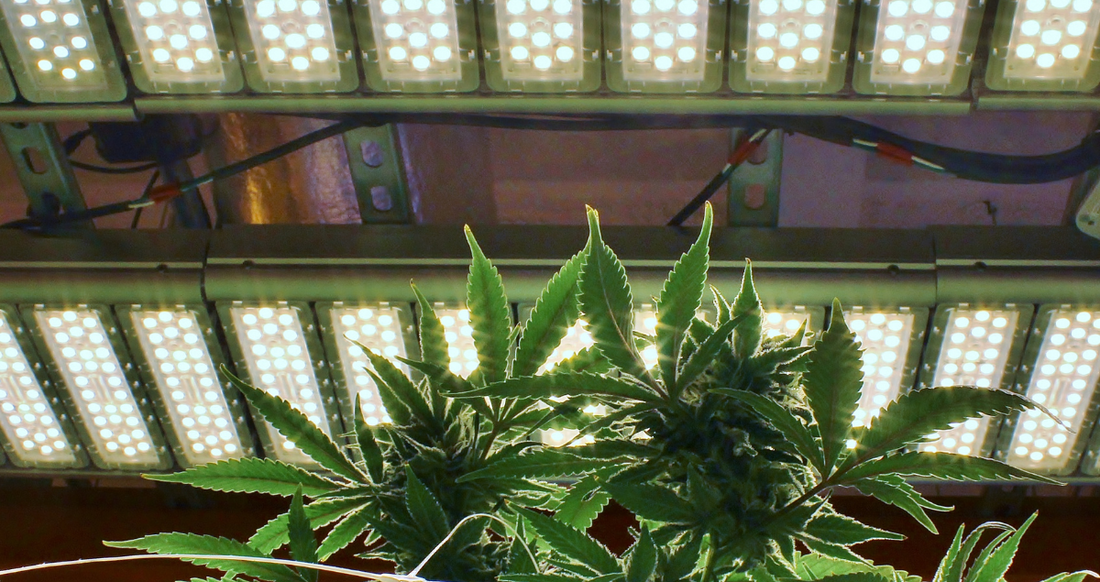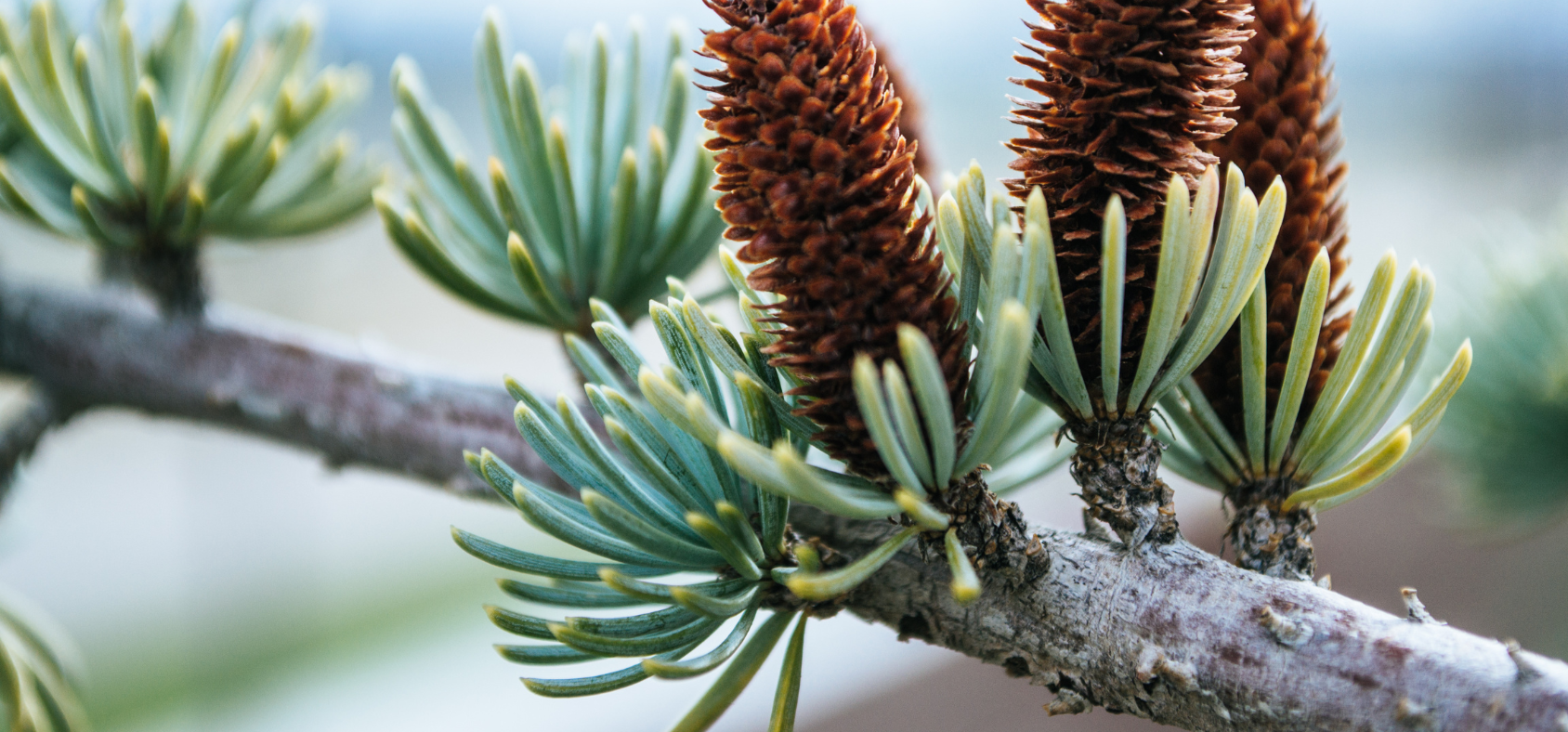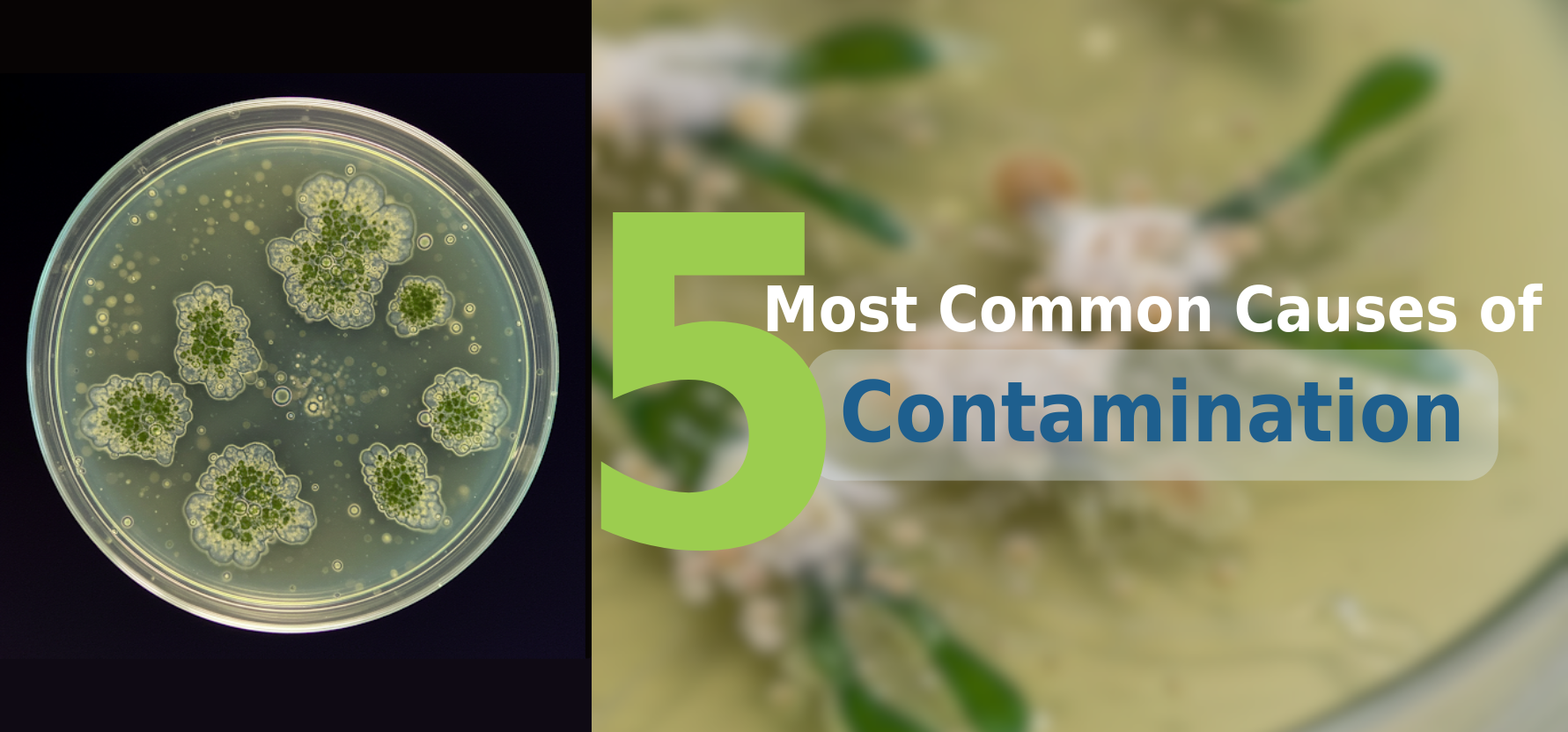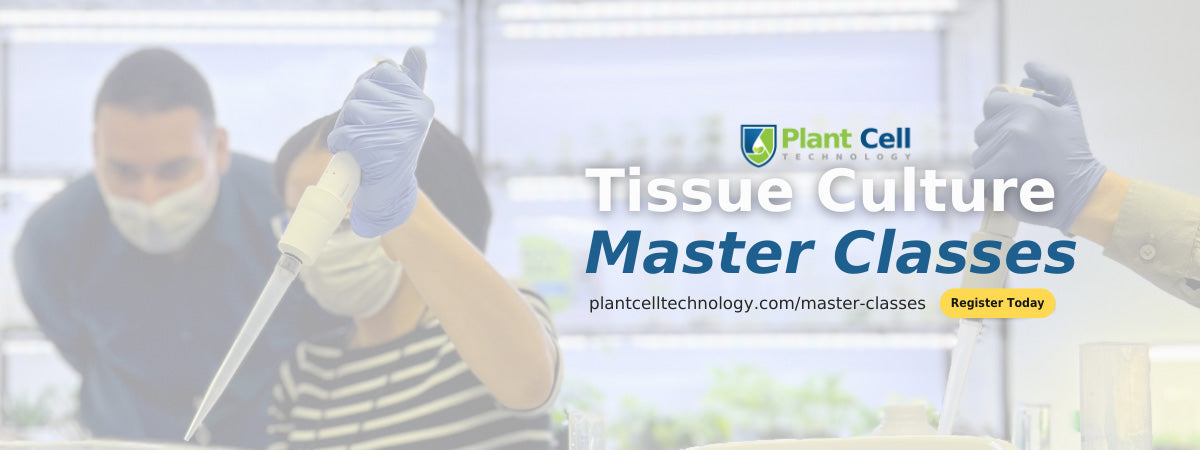
In Vitro Production of Cannabinoids from Cannabis Sativa
As a content and community manager, I leverage my expertise in plant biotechnology, passion for tissue culture, and writing skills to create compelling articles, simplifying intricate scientific concepts, and address your inquiries. As a dedicated science communicator, I strive to spark curiosity and foster a love for science in my audience.


The traditional technique to cultivate Cannabis is cuttings from a mother plant to produce genetically similar plants. However, this hasn’t been an effective technique because of several reasons including requirement of large space, decrease in the vigor of plants over time, and susceptibility of mother plants to pests and diseases.
Introduction
Cannabis is a plant of multipurpose use and considered one of the earliest and most widely grown plants. It has application in food and feed, textiles, pulp and paper industry, production of ropes and bags, medicine production etc.
The traditional technique to cultivate Cannabis is cuttings from a mother plant to produce genetically similar plants. However, this hasn’t been an effective technique because of several reasons including requirement of large space, decrease in the vigor of plants over time, and susceptibility of mother plants to pests and diseases.
The best alternative to grow these plants is tissue culture. Various tissue culture methods have the potential application with Cannabis for research, breeding, and novel trait development, as well as commercial mass propagation.
This article covers the four steps of tissue culturing Cannabis plants and the process of extracting cannabinoids. So, let’s begin!
Medicinal Applications of Cannabinoids
Did you know that the cannabis plant is a treasure trove of biologically active compounds with remarkable medicinal capabilities and uses?
The plant houses an array of secondary metabolites, boasting over 545 identified compounds. Among them are 104 cannabinoids, 120 terpenoids (including 61 monoterpenes, 52 sesquiterpenoids, and 5 triterpenoids), 26 flavonoids, and 11 steroids. They are collectively known as cannabinoids.
Cannabinoids have emerged as potent agents for managing various health concerns, including appetite/weight loss in conditions like HIV/AIDS and chemotherapy, as well as epilepsy. The FDA recognizes their anti-emetic and anti-epileptic properties, making them valuable in addressing these diseases.
In terms of medicinal applications, cannabis shines as an analgesic, offering potential alternatives to opiates for chronic pain management. It also serves as an appetite stimulant and digestive aid, among other roles. Over the years, research has primarily focused on cannabinoids like ∆9-tetrahydrocannabinol (∆9-THC) and cannabidiol (CBD), uncovering their profound effects.

What's So Great About Tissue Culture Technique?
Tissue culture is an advanced technique to grow plants. Only by using a few tissues of the plant, you can create a hundred and thousand of plants in the controlled condition on an artificial media. This technique offers several significant advantages, making it a valuable tool in various fields such as biotechnology, agriculture, and horticulture. Here are some of the reasons why tissue culture is considered great:
- Disease-Free Plant Production: By starting with disease-free explants, tissue culture can produce plants that are free from pathogens, contributing to healthier crops and reducing the spread of diseases.
- Micropropagation: Plant tissue culture allows for the rapid production of large numbers of genetically identical plants from a small piece of tissue, enabling efficient propagation of desirable traits and rare or endangered plant species.
- Year-Round Cultivation: Tissue culture enables plant growth regardless of season, allowing for continuous research and production.
- Genetic Improvement: Tissue culture is integral to plant breeding and genetic improvement, as it facilitates the selection and propagation of plants with desired traits, such as resistance to pests, diseases, and environmental stresses.
- Variability Reduction: Tissue culture minimizes genetic and phenotypic variability, ensuring consistent and predictable results compared to traditional propagation methods.
- Conservation of Plant Genetic Resources: Tissue culture is used to preserve and conserve rare or endangered plant species by maintaining them in vitro, preventing their extinction.
- Secondary Metabolite Production: Tissue culture can be used to induce the production of secondary metabolites, such as pharmaceutical compounds and flavor compounds, in plant cells, including Cannabis plants.
In Vitro Culture of Cannabis Using Suspension Culture
Currently, the in vitro methods to culture Cannabis is categorized into two two groups: direct and indirect organogenesis. The direct organogenesis techniques include the use of nodal parts of plant including axillary buds, cotyledons, shoot tips and epicotyls for in vitro culturing. The indirect organogenesis includes Callus/Cell suspension culture.
The in vitro technologies have their several advantages including economies of scale, production of disease-free plants, true-to-type plants for reducing the risk of GMP-EuGMP level medical Cannabis production, and improved genetics of the plants.
Among all the techniques mentioned above, the most common technique to grow Cannabis is cell suspension culture. The study mentioned here is taken from a report published by Logrono L. Javior (2014). In vitro cell culture of Cannabis sativa for the production of cannabinoids.
1. Explant Preparation
Explant is tissues collected from the mother plant to establish the in vitro culture. It can be from any part of the plant shoot, root, leaves, flower, seed, or nodes. But, in this study flowers were collected as a source of explant. It’s because flowers of the female plants are rich in cannabinoids, needed to be extracted for the production of Cannabis oil.
After collecting the flowers, they are cut or minced aseptically in smaller pieces to make them ready for the culture process. When the cut pieces of flowers are placed on the growth media they develop cells, forming a large group of tissues, that can be further divided and subcultured on the fresh media.
2. Callus Induction
Callus is an unorganized dividing mass of cells. The regeneration of a plant from a few tissues is majorly transitioned through the callus formation stage, which involves dedifferentiation of plant material. The ability of plant cells to regenerate whole plants is known as totipotency.
Plant growth regulators or plant hormones are required to induce callus formation in the cultured explants. The basic steps include:
- Cut the surface sterilized explants into pieces of about (0.2 x 0.2) cm2.
- Culture the explants in the MS medium containing 2,4-D at 1 mg/L for callus induction.
Note: The composition of plant hormones varies depending on the condition and cultivar you use for the culturing process.

3. Cell Suspension
Cell suspension is transferring the obtaining callus into the bioreactor containing liquid growth media. In this stage, the basic steps include:
- Cut approximately 1.5 g callus tissue from each callus and chop it into even smaller groups.
- Suspend the group of separated cells into the 250 ml flask containing 50 ml of liquid MS media.
- Incubate the suspended cultures at 25ºC under continuous light (intensity 1,200-1,800 lux) on a gyratory shaker at 110 rpm.
- After two weeks, transfer and maintain the content of the flask in B5 medium supplemented with 2,4-D 2.0 mg/L, IAA 0.5 mg/L, NAA 0.5 mg/L, K 0.2 mg/L and sucrose 30 g/L.
- Maintain the cell content by subculturing them weekly.
4. Downstream Process
The study talked about using biotic or abiotic elicitors to activate the production of secondary metabolites. The proposed elicitors include: chitosan, chitin, and elicitin as biotic elicitors; and sodium orthovanadate and vanadyl sulphate as abiotic elicitors.
But, not many studies mention the use of elicitors for the production of cannabinoids from the Cannabis plants. And, it should also be noted that the response of elicitors can vary depending on various factors including the specificity of elicitors interval addition, the culture conditions, or the concentration of the elicitor.
Downstream is the processing of mass of cells for the cannabinoid extraction. It’s a two step process: decarboxylation and extraction.
Decarboxylation: This step involves the conversion of acidic cannabinoids into their neutral analogues under the influence of heat. To achieve this, the temperature is continuously increased until 95% of the acidic cannabinoids are converted to neutral cannabinoids. This has to be done while ensuring that too much heat can convert THC to CBN. so, first heat the material at 105º C for 15 minutes and then at 120º C for 60 minutes.
Extraction: In this step, the heated material is extracted using petroleum ether. The extract is concentrated into a tar on a flash evaporator at 40°C and then dissolved in ethanol:water mixture in 1:1 ratio. Then, the prepared solution is extracted three times using hexane, which is later pooled and then later evaporated on a flash evaporator at 40°C.
Image: A workflow of downstream processes.

The production of secondary metabolite is a meticulous work and it requires constant focus and expertise in doing so. And, if you need any help at any stage of tissue culture then you can reach PCT and we'll guide you with all your requirements.
Want To Get Hands-On-Experience In Cannabis Tissue Culture? We Can Help!
Tissue culture is an advanced technology that requires growers to have knowledge and expertise to efficiently integrate it into their lab setting. For beginners, deciphering information from research papers and understanding how to get started can be a challenge. But fear not! We have the solution for you.
Introducing our comprehensive Cannabis Tissue Culture Master Class, designed to provide you with all the necessary information and guidance to excel in tissue culture. Whether you're new to the field or already have an established Cannabis tissue culture business, this master class is perfect for you.
Join us at the Cannabis Tissue Culture Master Class and gain access to protocols, sterilization processes, gender screening techniques, long-term preservation methods, and much more. The classes are led by experts in the area, having 15-30 years of hands-on-experience with the technique. This is the opportunity for you to learn from the experience of these experts, get answers to your list of questions regarding the process and lab building, and level-up the game of you Cannabis lab.
Since there are only a limited number of seats available, we encourage you to book your tickets today to secure your place at the table of all Cannabis growers and businessmen worldwide.
See You at the Master class!
Blog Categories
View by Level
Popular Blogs

Can We Grow Wood in a Lab? The Future of Tissue Culture in Forestry
Introduction Wood has long been a cornerstone of human civilization—used for shelter, tools, paper, energy, and countless everyday items. However,...
Read More
The 5 Most Common Causes of Contamination in Tissue Culture Labs
Introduction Scaling up your tissue culture production is impossible if you’re constantly battling contamination. Contamination is one of the biggest...
Read MoreSubscribe to Our Newsletter
2 comments
Fantastic insights on in vitro cannabinoid production! This innovative approach holds great promise for the future of cannabis research. #CannabisSativa #Innovation
Learn about growing cannabinoids from Cannabis sativa in labs at Plant Cell Technology’s blog. It’s an interesting read for anyone curious about cannabis research and biotechnology.








Join the conversation
Your email address will not be published. Required fields are marked